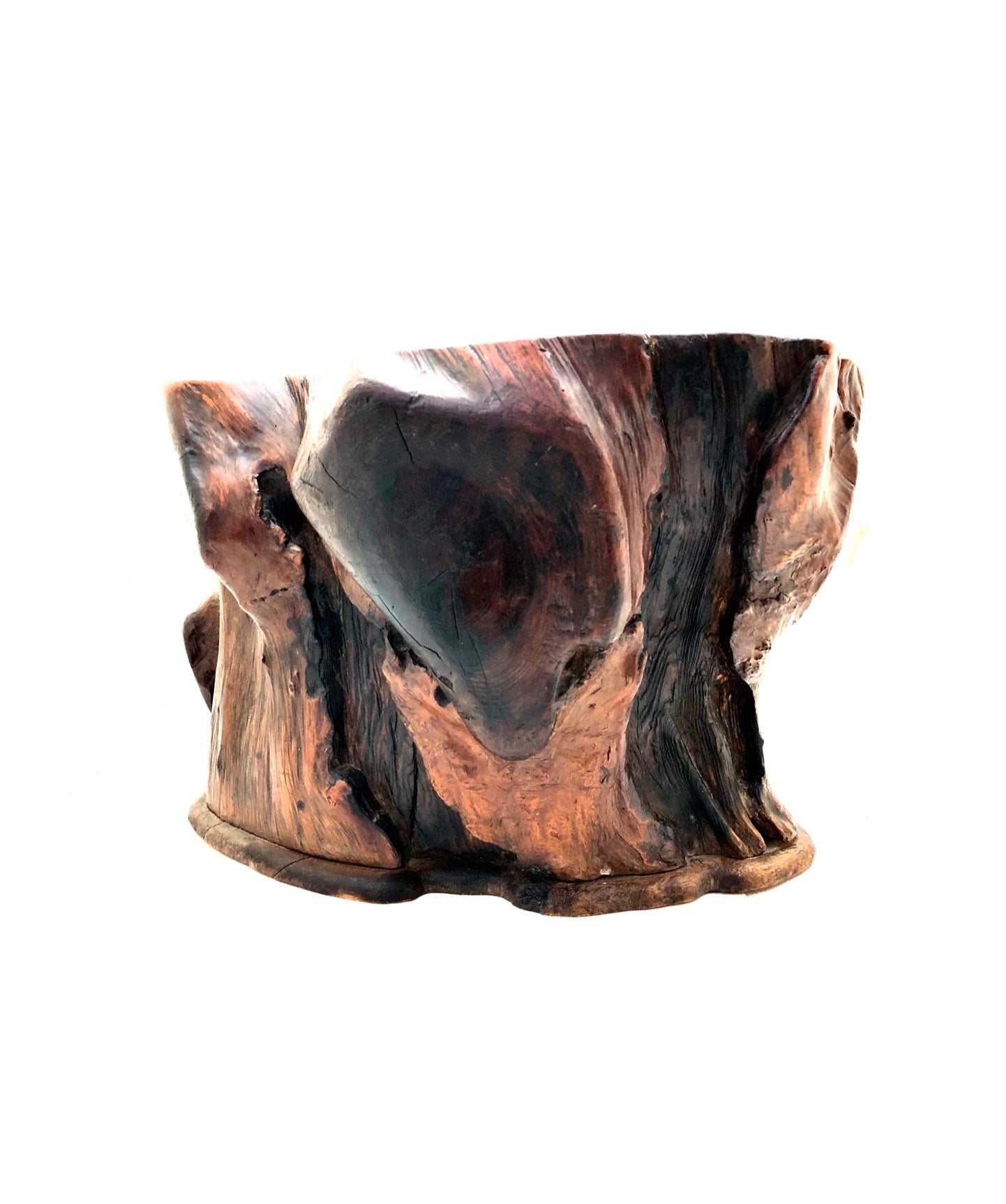
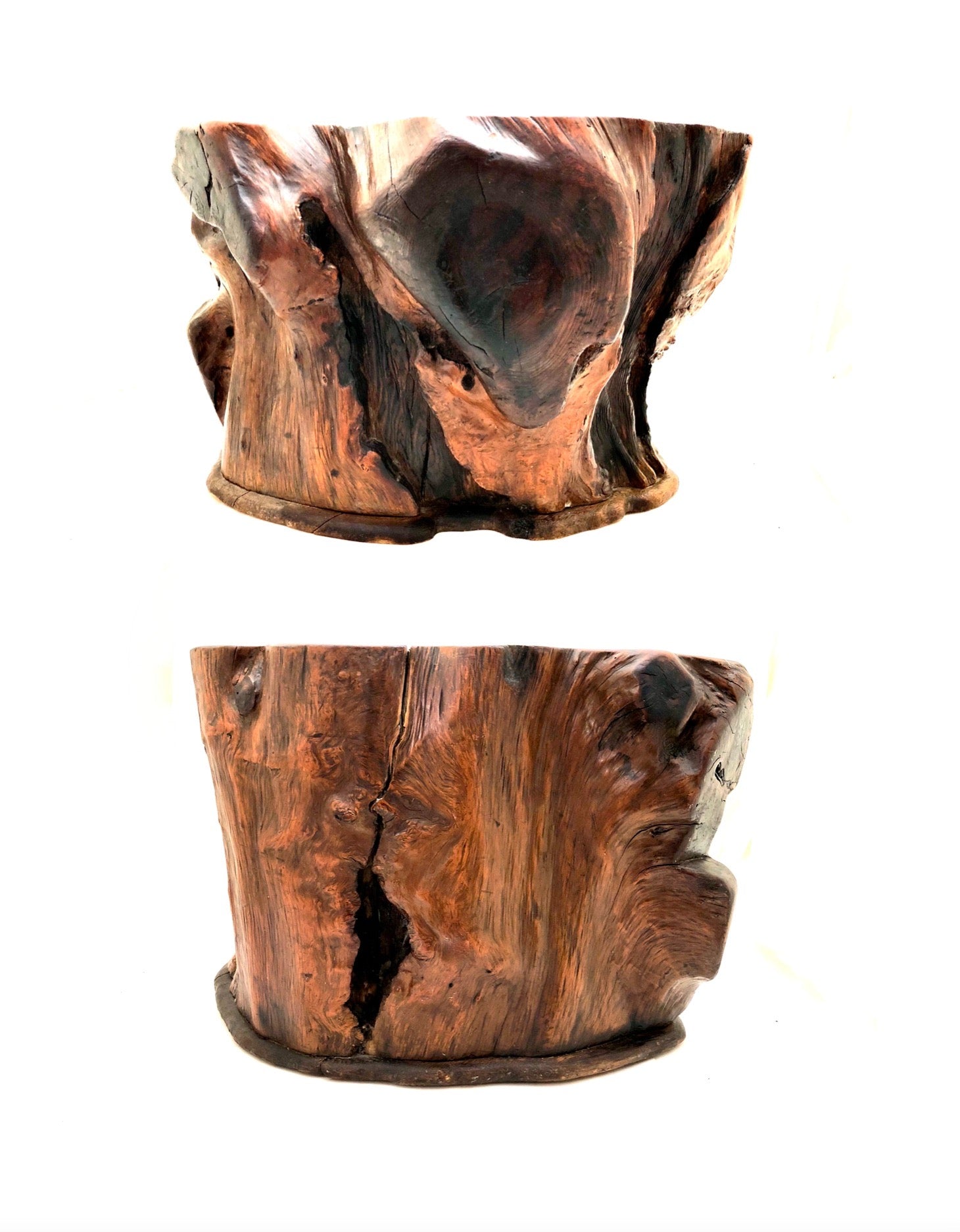
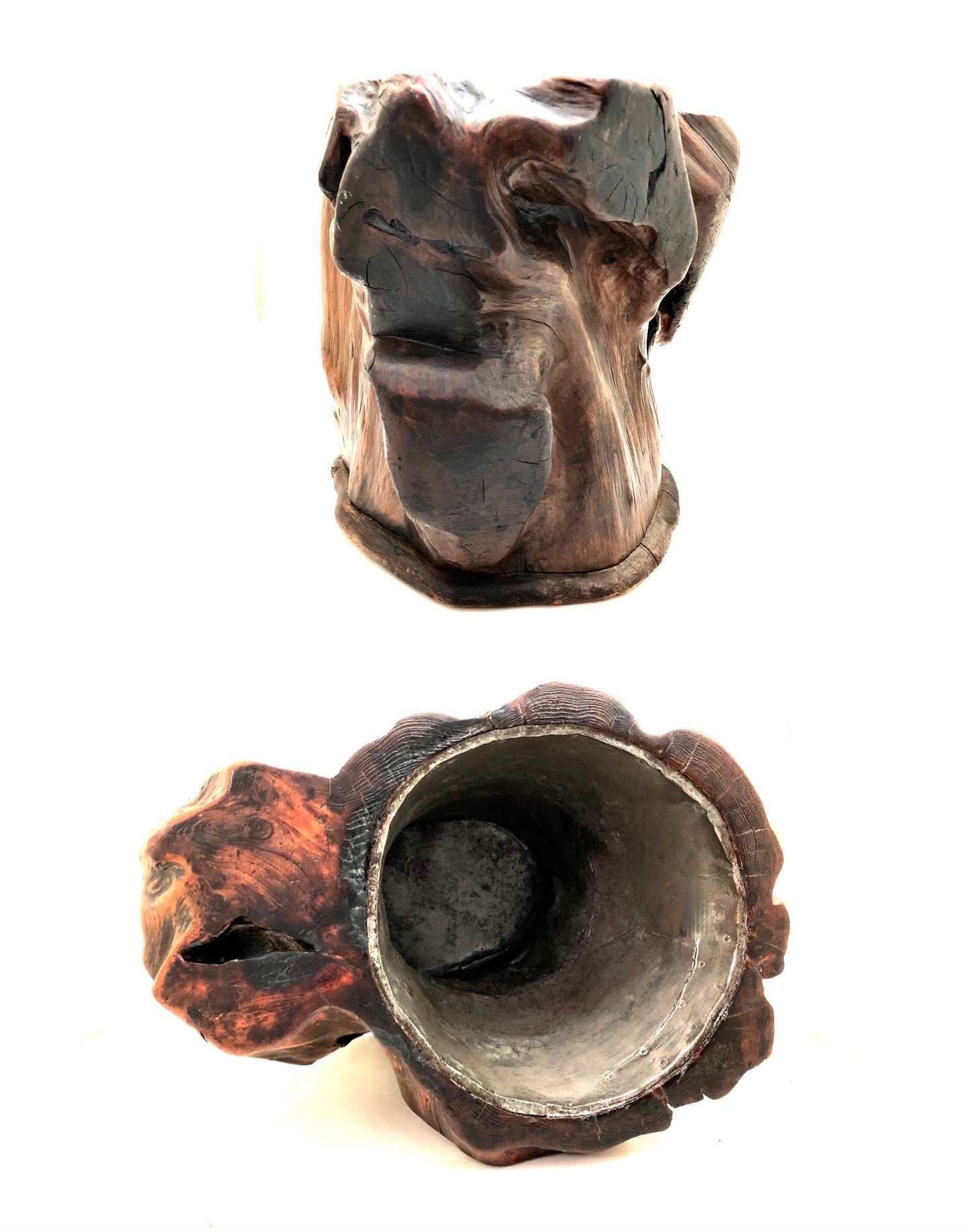
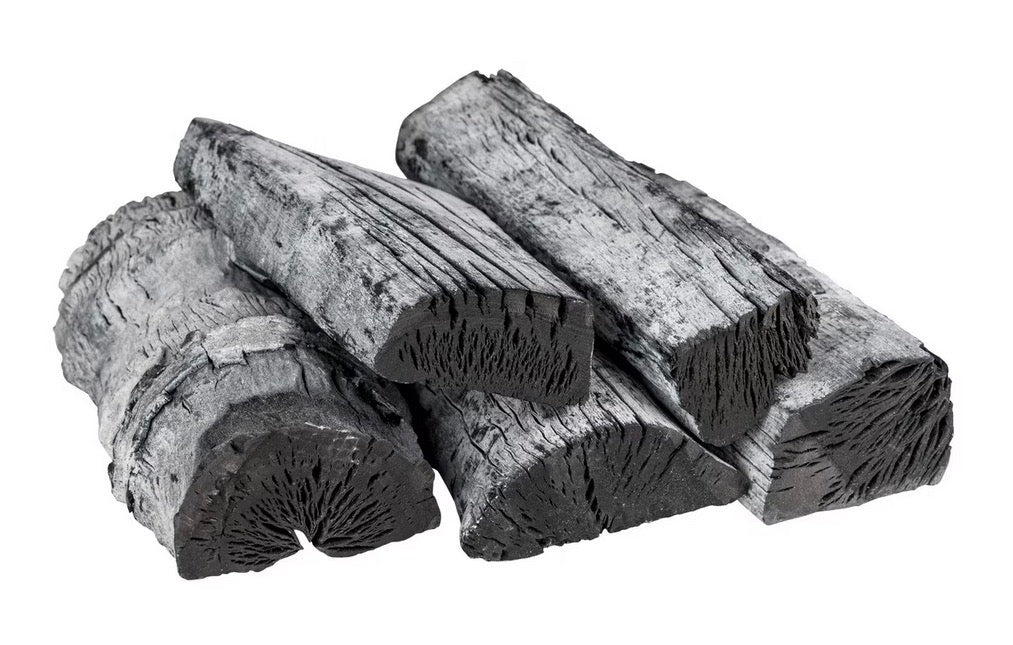
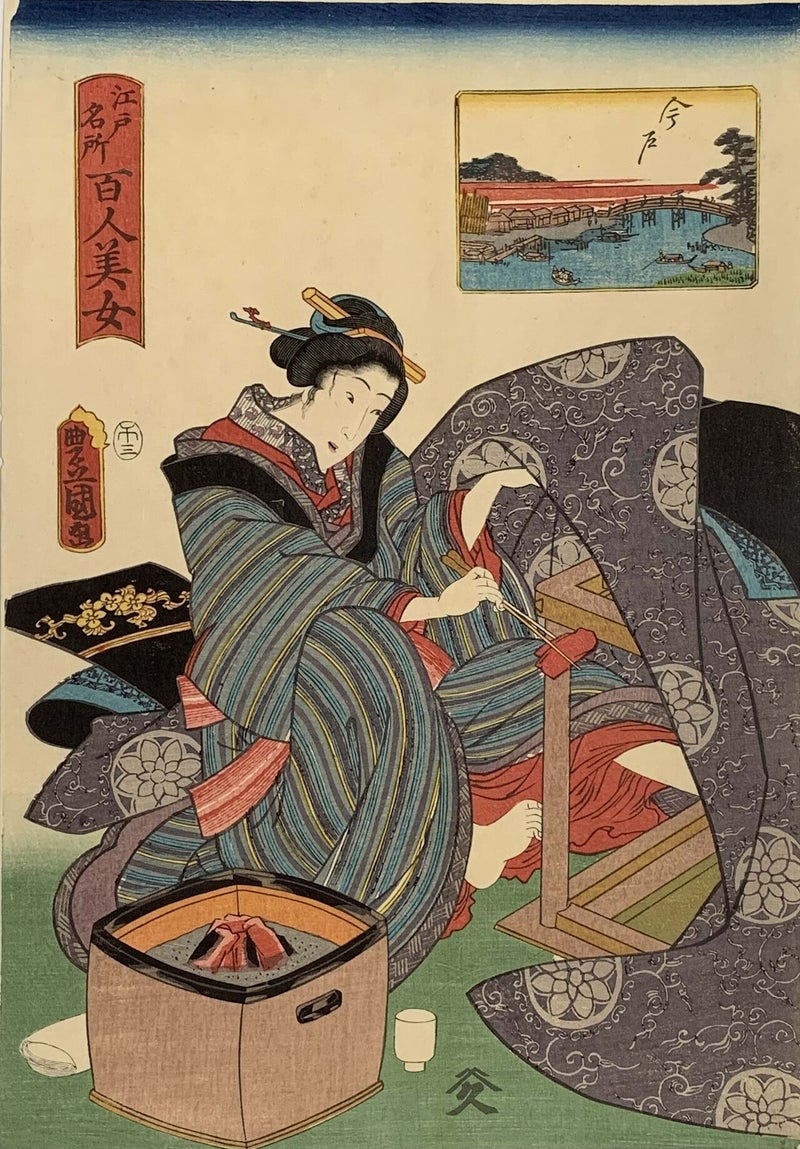
Antique Japanese Root Wood Large Hibachi (火鉢) Meiji Era
Dimensions: 10-0”h x 15-0”dia.
Antique Japanese naturalistic solid Zelkova (Elm), wood Hibachi for heating charcoal has a lovely textural look and feel. This particular hibachi was discovered in Kyoto in 1989. Many of these tree trunks or root bases were developed as interior accessories, and in this case, because of their heftiness, it was used interchangeably for either a cooking Hibachi, a hand warmer, or a brazier alongside Kotatsu table (see last image of a woman in the Edo period replenishing coals to an earthen pot under the table), in a small room to warm multiple family members. Throughout Japanese history, leftover materials were initially used to make functional and decorative objects, and the process was known as ‘Mottainai’, meaning ‘to not waste’. This original and very unusual, beautifully burled wood has not been restored. The exterior is sealed with candle wax, (Roseau no ro). The piece weighs 14-0 lbs, and will be shipped within the contiguous US via UPS or USPS.
Additional Information: Since charcoal produces less smoke than a fireplace using wood, this use spread from the samurai and court nobles to townspeople and commoners in the Edo and Meiji periods. Pebbles, or the like, were placed in the bottom of a lined Hibachi. In this case, the "otoshi," or interior, where the ash was placed, was made of metal plate instead of copper (restricted to cooking Hibachi). Through use, specially prepared charcoal, (Binchō-tan / ubame oak) and wet pebbles have caused the metal to age and show changes in the surface texture. The previous owners as the images show, have kept it in good condition throughout the years.
Also in contemporary Japan heaters of this type were not used and many were transformed into flower containers. Japanese dried flowers, particularly those used in oshibana and Ichirin, being flowers and other botanical materials that have been dried some left in their natural state and others pressed to create intricate and beautiful arrangements, (may include Daisy, Adkura (cherry blossom), peony (botan), Tsubaki, (camellia) and Hydrangea along with grasses such as Stobe, flax, and wheat) . This art form, which originated in 16th-century Japan to create nature-inspired designs. Oshibana is a way to capture the beauty and fleeting nature of blossoms and leaves in a lasting and artistic form. Ikebana arrangements, unless they was in a vessel were not used because the metal liner was not waterproof.
Condition: Excellent condition means commensurate with age, showing light wear marks from usage, well preserved, and over the years it has developed an interesting patina with a layering effect for continued use—worn metal coal/ash interior lining.
